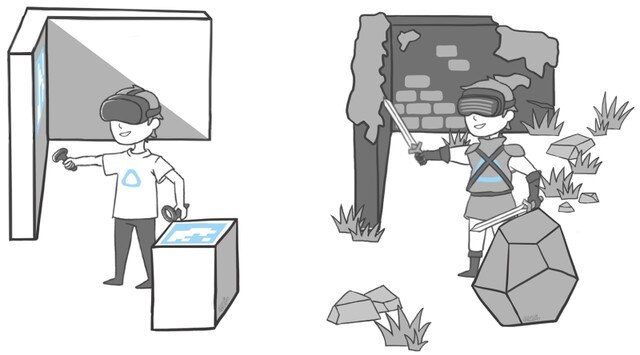-
Introduction
-
Tracking modes
-
ArUco markers and marker-based tracking features
-
ArUco markers
-
Marker-based tracking features
-
-
Marker-Based Location Sharing setup
- Setting up Marker-Based Location Sharing
- Creating ArUco markers for Marker-Based Location Sharing
- Aligning the height of a virtual scene using an ArUco marker
- Moving a user to a specific point in a virtual scene
- Setting up Marker-Based Location Sharing with VIVE Business Streaming
- Marker-Based Location Sharing APIs (AIO)
- Marker-Based Location Sharing APIs (PC VR)
-
LBE Mode/LBE Hybrid Mode setup
-
LBE map configuration
-
Marker-Based Drift Prevention setup
-
Marker-Based Advanced Relocation setup
-
Marker-Based Scene Alignment setup
- Setting up Marker-Based Scene Alignment
- Configuring the position of an ArUco marker in a virtual scene (Unity)
- Creating ArUco markers for Marker-Based Scene Alignment
- Setting up Marker-Based Scene Alignment with VIVE Business Streaming
- Marker-Based Scene Alignment APIs (AIO)
- Marker-Based Scene Alignment APIs (PC VR)
-
Simulator VR Mode setup
- Setting up Simulator VR Mode
- Pairing wrist trackers with a headset
- Installing an anchor controller or tracker in a VR simulator
- Coordinate alignment
- Anchor controller and tracker origin points
- Aligning VR and anchor coordinate systems using a VR controller
- Aligning VR and anchor coordinate systems using an ArUco marker
- Simulator VR Mode FAQs
-
Other services
-
Additional features
- Contact Us
Marker-Based Scene Alignment
Marker-Based Scene Alignment aligns a virtual scene with the physical environment by embedding the positional data of one or two ArUco markers into a virtual map created for LBE Mode or LBE Hybrid Mode. The spatial coordinates of the LBE map are aligned with the virtual scene according to the positional data provided by the ArUco markers.

In Marker-Based Scene Alignment, the LBE map is shared with both the headset and the virtual scene, allowing the headset to align with the scene according to the spatial coordinates of the LBE map. This is different from Marker-Based Location Sharing, which uses the positional data provided by an ArUco marker to share its position with other players in the play area.
With Marker-Based Scene Alignment, structural elements in the physical environment such as walls and pillars can be integrated into the virtual world to create a more realistic and immersive VR experience.
For details on setting up Marker-Based Scene Alignment, see Marker-Based Scene Alignment setup.